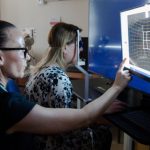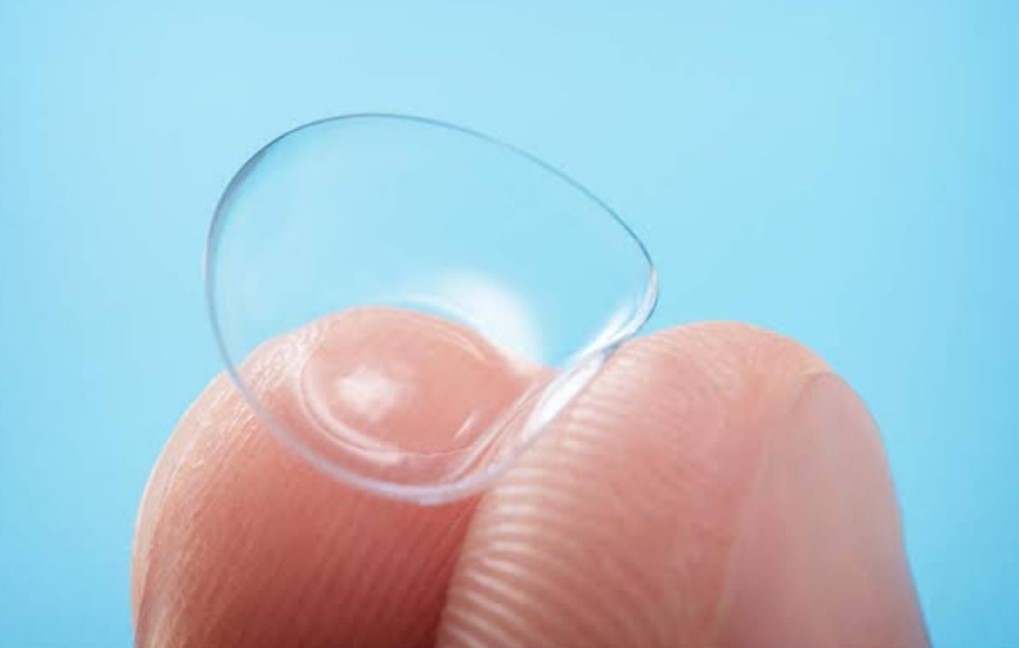WHAT IS RGP ? :-
Rigid gas permeable lens(RGP) is a hard contact lens ,is a rigid contact lens made of oxygen permeable polymers.
Rigid lens fitting is more complex than the soft lens fitting , but in reality, the number of decisions practitioners must make is essentially the same when judging the fit of either lens.
RIGID CONTACT LENSES ARE TWO TYPES
1. Rigid non-gas –permeable lenses
2. Rigid gas –permeable lenses
RIGID LENS FIT
The rigid lens fitting is evaluated in many ways
- Static – With the lens in stationary position , the fluroescein pattern with central alignment , mid peripheral minimal clearance and adequate pooling in the peripheral curves is evaluated .
- Dynamic – Evaluates the movement of the lens with the blink and further judge the tear exchange under it is called the dynamic fitting evaluation . the centration and the coverage are also evaluated.
3. Centration – A well – centered lens will remain on the cornea in all positions of gaze . The optic zone of the lens should cover the visual axis or the pupil of the eye throughout . if they don’t then the wearer will have glare and ghost images. The decentered lens which touches the conjunctiva may also lead to staining and discomfort.

If the lens is well aligned with the cornea it will center well otherwise the lens may be low riding or high riding .


4. CornealCoverage – The rigid lens is smaller than the cornea unlike soft lens which are bigger and drape the cornea and the limbus .

- 5. Movement – The movement of the lens is an important issue in the rigid lens fitting because :-
- It facilitates tear exchange
- It removes the debris under the lens
- There is significant exchange of oxygen undemeath the RGP during blink.

- 6. Alingment– Fluorescein Pattern – The ideal RGP lens should show alignment of the back surface of the lens with the cornea over most of the surface. The alignment of the lens back surface allows maximum tear exchange with minimum pressure over the cornea.
The alignment is best evaluated by the fluorescein pattern . the following are the three areas of observation to define an ideal alignment fit – steep or flat on the eye.
- Central
- Mid- peripheral
- Edge width with clearance

Ideal Fluorescein Pattern
- Centration – central
- Movement – 1 to1.5 mm smooth
- Central – alignment
- The mid- peripheral bearing – minimal
- Edge band – 0.26 to0.35 mm


Steep
- Centration – central
- Movement – restricted
- Central – pooling
- Mid – peripheral bearing – heavy
- Edge band – narrow <0.25 mm


Flat
- Centration – poor, unstable
- Movement – excessive , rotation
- Central –touch
- Mild – peripheral – pooling
- Edge band – wide >0.4 mm


PROCEDURE FOR RIGID CONTACT LENS
- History is taken in detail from the patient
Retinoscopy

[Retinoscopy reflex with centred RGP lens (above left) and decentred lens (above right)]
- Refraction , best corrected spectacle prescription in minus cylinder form need to be confirmed before fitting lenses
- Tear lens thickness
- Lens flexure
- PD ruler
- General ocular examination , like Slit lamp examination of the anterior segment
- White light
- Cobalt – blue light
- Keratometry , measure the flattest and the steepest corneal curvature
- Lens selection
- Baseline data
- Tear quality
- Corneal astigmatism
- Lens flexure
- HVID , measure the horizontal visible iris diameter with the help of a ruler , this is used to choose the initial total diameter of the lens . it is 1.2 to 1.4 mm smaller than the HVID .
- Corneal topography
- Shape factor
- Apex position and contour
- Location of astigmatism
- And also checked up palpebral fissure height
CALCULATION : suppose ,
OD – K1=44.25D(7.62mm)[flat]
K2=45.25D(7.45mm)
OS – K1 =44.50D(7.58mm)[flat]
K2 = 45.25D(7.45mm)
HVID =10mm
Formula k (mm)=337.5/k(DS) [ DS to mm]
OD : BOZR (Base curve)=flat k in mm-0.05
= (7.62-0.05)mm
=7.57mm
OS : BOZR (Base curve)=flat k in mm -0.05
= (7.58-0.05)mm
=7.53mm
Total Diameter [for OU] =HVID-2
= (10-2)mm
=8mm
TECHNIQUES
As with all contact lens fittings, an initial examination is required to judge patient suitability and evaluate patient needs.
INITIAL TRIAL LENS–CHOICE AND INSERTION
The initial lens to trail should be chosen using the following criteria :
- Back vertex power
- Back optic zone radius
- Spherical lenses
- Aspherical lenses
- Total diameter

[Selection of total diameter as a function of palpebral aperture]
- Center thickness
- Back optic zone diameter
- Material
INSERTION OF THE LENS ON THE EYE AND ITS ADAPTATION
Before inserting the lens inform the patient of the initial discomfort . explain that this will subside with usage and it takes a few days to get adapted to them.
The major discomfort with the rigid lens wear is due to the interaction of the upper lid with the lens edge , instruct the patient to look down with chin up for initial 5minutes of the lens wear. Once his confidence builds up let him look up.
Wait till the patient adapts and the watering stops , before evaluating the fit . this may take 20 to 30 minutes.
ASSESSMENT OF FIT
- With a torch or Diffuse Illumination and white light of slit lamp
- Fluorescein Evaluation
- Subjective response
Comfort with RGP lenses is initially less than with soft lenses, although, following a 30-minute adaptation period, the patient should report no more than lens sensation. If ‘pain’ is reported, together with excessive reflex tearing, then the lens needs modification.
- Over-refraction
Determining the over-refraction allows the tear lens to be calculated. It is the difference in power between the refraction at the corneal plane and the power of the contact lens needed to correct the ametropia. The power of the tear lens is an invaluable means of assessing the alignment of the lens to the cornea. If the lens is fitting steeply, a positive tear lens will result and the power of the contact lens will require less plus or more minus than the ocular refraction. If the lens is fitting flatter than the cornea, the tear lens will be negative and the converse will apply.

[Tear lens thickness]

Central thickness and flexure and the material to be ordered











